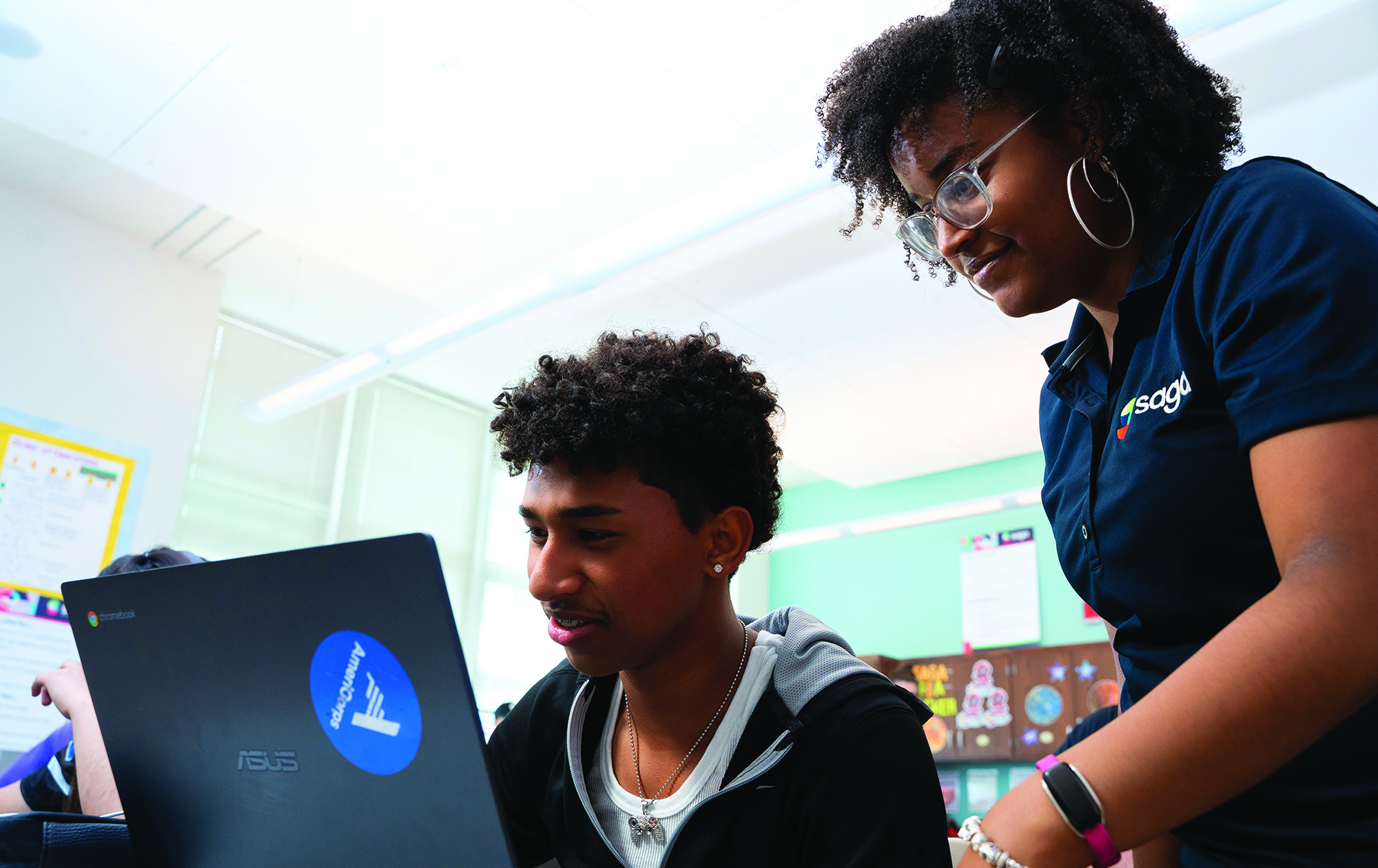
The UChicago Education Lab aims to reverse pandemic-induced learning loss.
Four years ago the COVID-19 pandemic closed schools around the United States, sending students and educators home for an unprecedented, monthslong experiment in remote learning. The disruption had a cost—student test scores in math fell by record levels between 2020 and 2022, and reading scores also declined. Most children lost half a year of learning, and losses were even larger for low-income and minority students and in school districts that stayed remote longer.
“This is the biggest problem facing America that nobody’s talking about,” economist Jens Ludwig, faculty codirector of the University of Chicago Education Lab, told the audience at a Washington, DC, event in December 2023 convened by the Aspen Economic Strategy Group. If learning losses are not reversed, Ludwig said, it could mean an average of 2 to 9 percent less income for the nearly 50 million children enrolled in public K–12 schools—a collective $900 billion loss in future earnings.
Ludwig and Education Lab codirector Jonathan Guryan argued the point further in a paper the Aspen Economic Strategy Group commissioned for a 2023 volume on building a more resilient US economy. “Because education is intrinsically cumulative, there is the real possibility that pandemic-induced school disruptions may set a whole generation of students off track for the rest of their lives,” they warned.
Yet the solution may be relatively straightforward. A decade ago, Ludwig and Guryan led a study showing how individualized, intensive, in-school tutoring improved students’ math test scores and class grades in Chicago Public Schools. More recently, the US Department of Education has encouraged school districts nationwide to prioritize their spending of federal pandemic relief funds on “high-dosage” tutoring, defined as individualized instruction that takes place three or more times per week, during school, for at least 30 minutes, with small groups of students and a consistent trained tutor.
Armed with this model, in 2021 the Education Lab and nonprofit MDRC launched the Personalized Learning Initiative, describing the effort as “a moonshot to overcome pandemic learning loss.” With its partners and supporters, the Personalized Learning Initiative aims to develop and test high-dosage tutoring programs at sites around the country and expand the most effective approaches on a massive scale. The initiative currently involves approximately 18,000 high-need students in school districts in Illinois, Georgia, North Carolina, South Carolina, Florida, New Mexico, and California.
In its current phase, the Personalized Learning Initiative is focused on collaborating with districts to design, test, and scale high-dosage tutoring. To identify the types of tutoring that have the greatest impact on learning, project teams are tracking variables such as student-tutor ratios, the frequency and length of tutoring sessions, who receives tutoring, whether it is in-person or virtual, and the level of training and the source of the tutors themselves (i.e., a vendor or a local hiring process). The project is especially interested in tutoring models that link to improvements in third-grade literacy and middle and high school math skills—two crucial predictors of long-term student success.
The Personalized Learning Initiative shares detailed monthly reports with schools and districts so they can modify their programs to incorporate the approaches that work best. “We don’t want this to just be a randomized controlled trial where in four years someone reads the research, puts it on their shelf, and sets it aside,” says Sadie Stockdale Jefferson, the Education Lab’s executive director.
Pressure exists to quickly identify budget-friendly tutoring models, since federal Elementary and Secondary School Emergency Relief aid, a key funding source, runs out in September 2024. Personalized tutoring can be expensive—the Education Lab’s past research calculated the average cost at $3,000 per student per year—so the Personalized Learning Initiative is testing approaches that can lower the price. Two big questions are, Jefferson says, “Can we substitute technology for some in-person tutoring to bring the cost down, so that this can scale to more kids? How much can we substitute?”
To find answers, the Personalized Learning Initiative and its partners will continue to gather and analyze data on educational technology use as a key variable in the coming year. The goal is to create a “playbook” for school districts nationwide that details how tutoring can be scaled up in different settings, at the lowest possible cost per student, without sacrificing effectiveness. Meanwhile, the project released initial findings this past March showing that in-school, high-dosage tutoring had already led to meaningful improvement in math learning for students in Chicago Public Schools and in Georgia’s Fulton County Schools.
Tutoring is not a panacea, and the pandemic exacerbated many long-standing challenges. The academic achievement gap—tied to students’ race, ethnicity, and socioeconomic status—widened in most states from 2019 to 2023. Students in both low-income and wealthy districts have been absent from school at record rates nationwide, with nearly one-third of students missing more than 10 percent of the school year over the past two academic years. Mental health difficulties persist, especially for teens, who have reported feeling sad or hopeless at high levels, according to Centers for Disease Control and Prevention studies.
Still, Education Lab leaders believe that a national scale-up of tutoring could not only reverse pandemic-era learning losses but also establish a system that helps schools intervene whenever any student falls behind grade level. In the long run, they say, it’s a moonshot worth taking.
